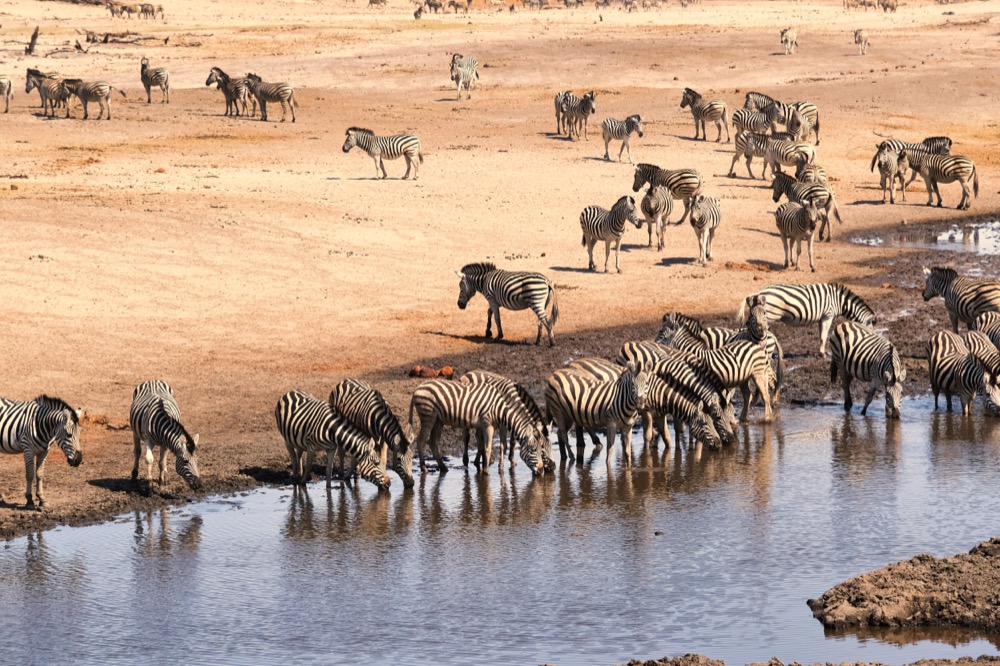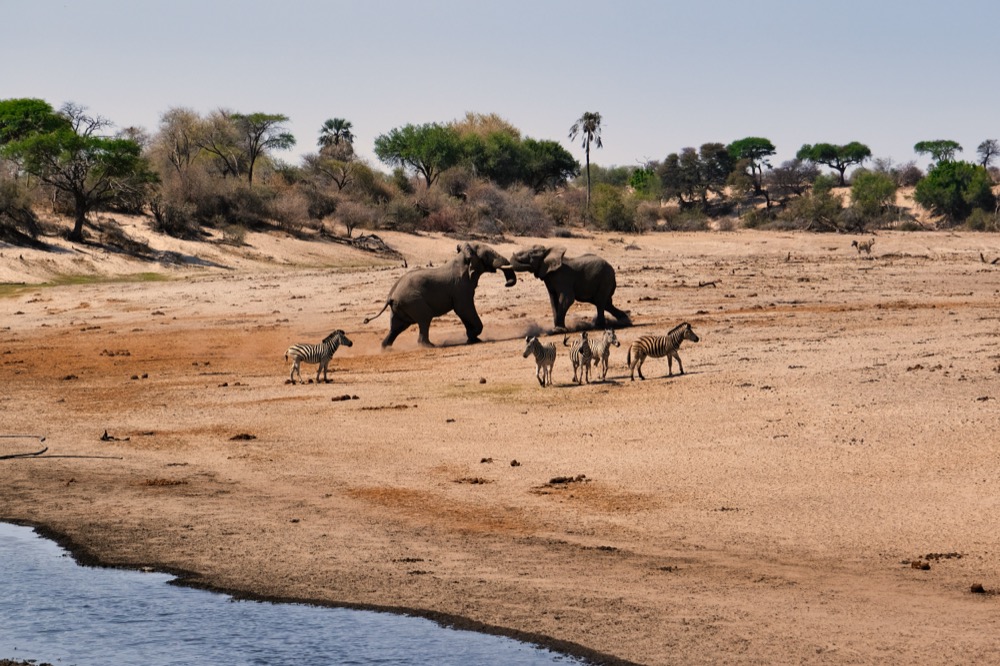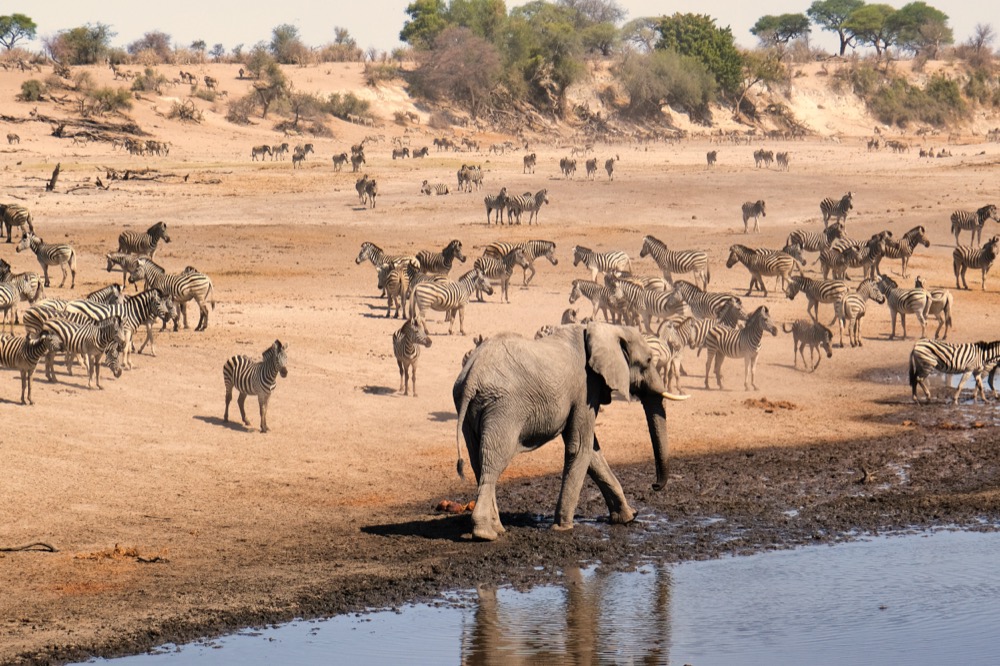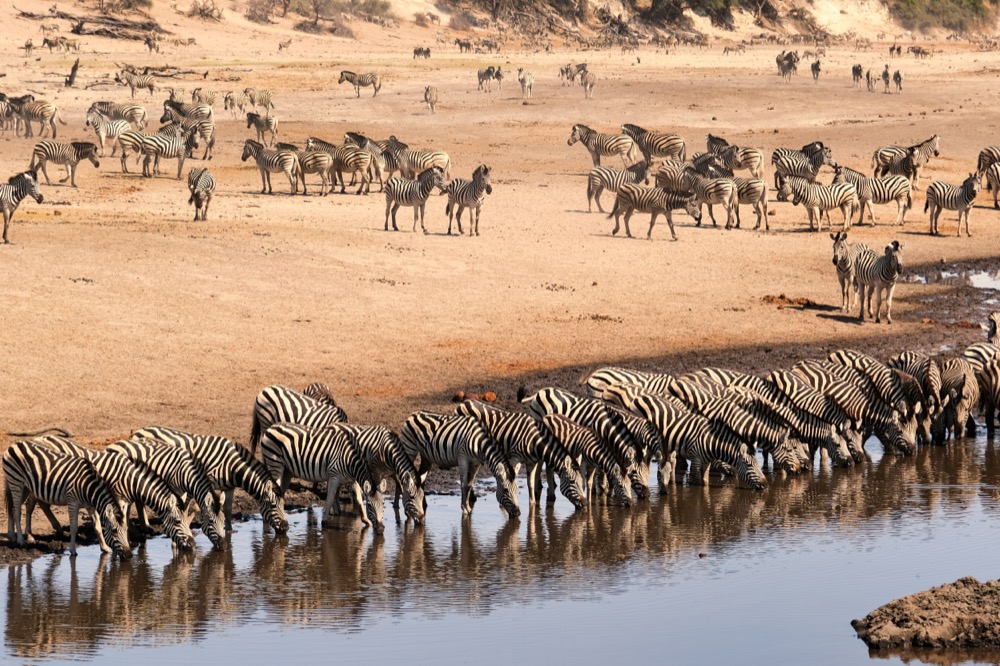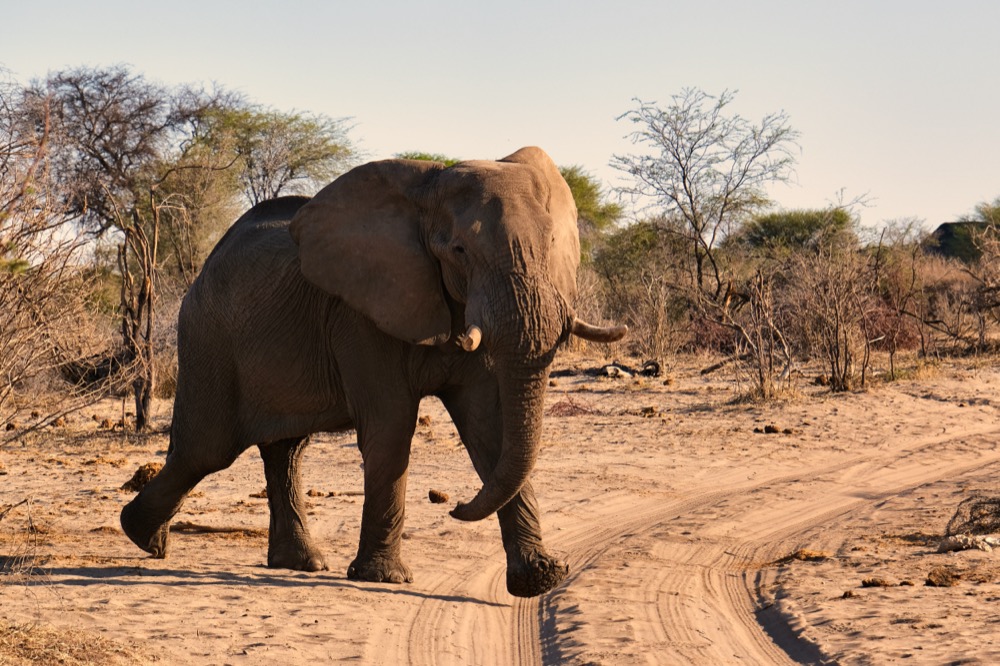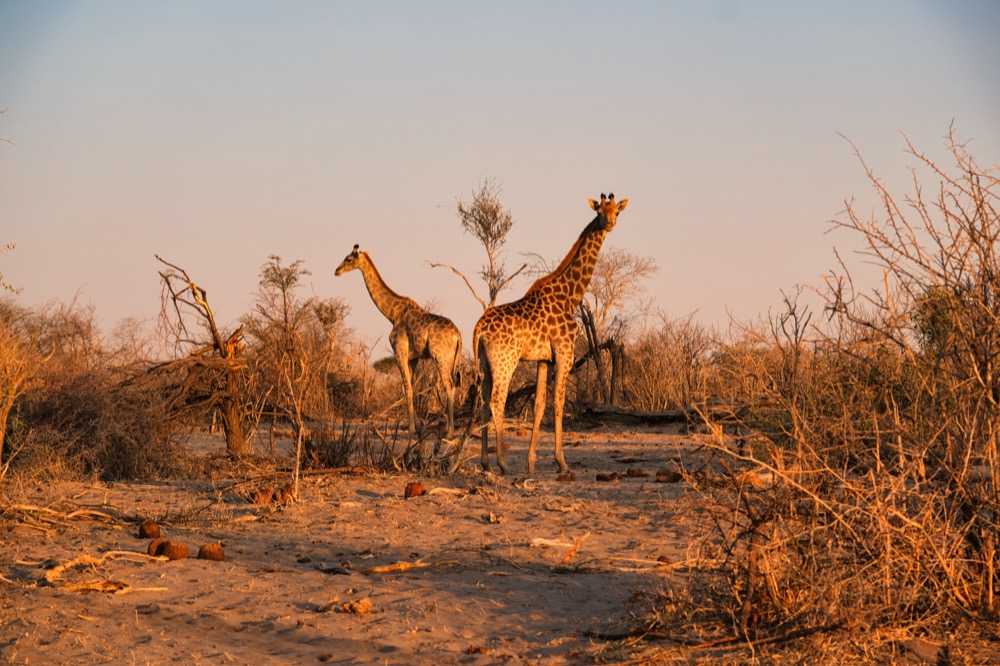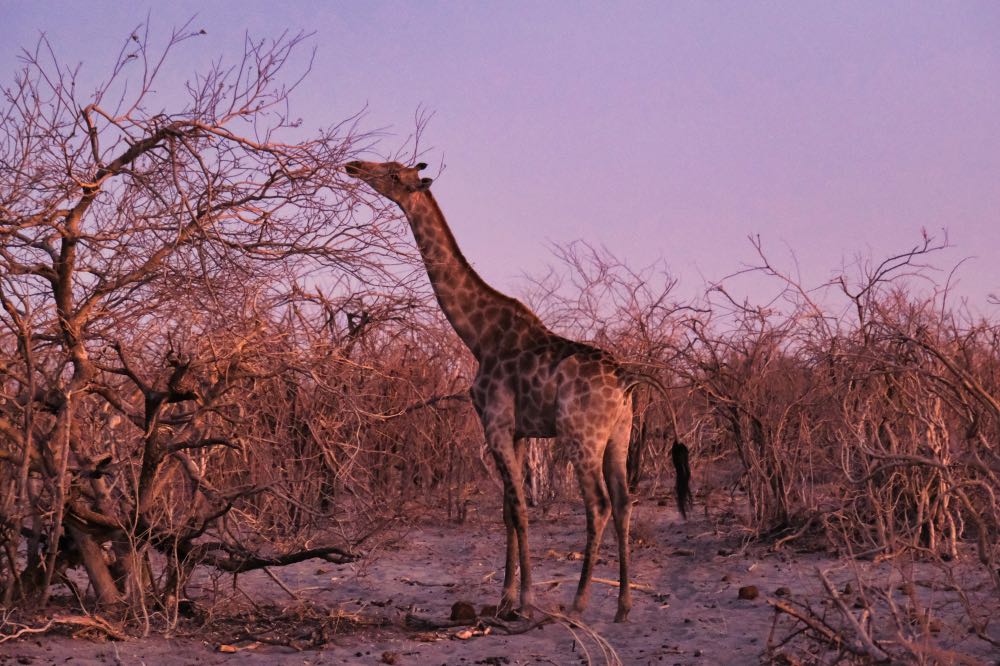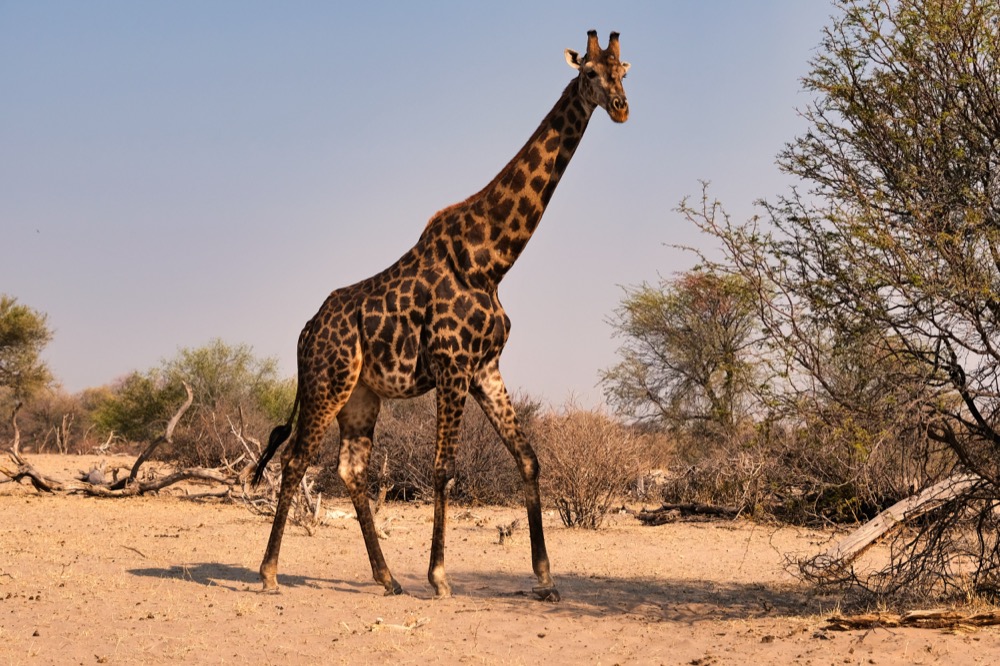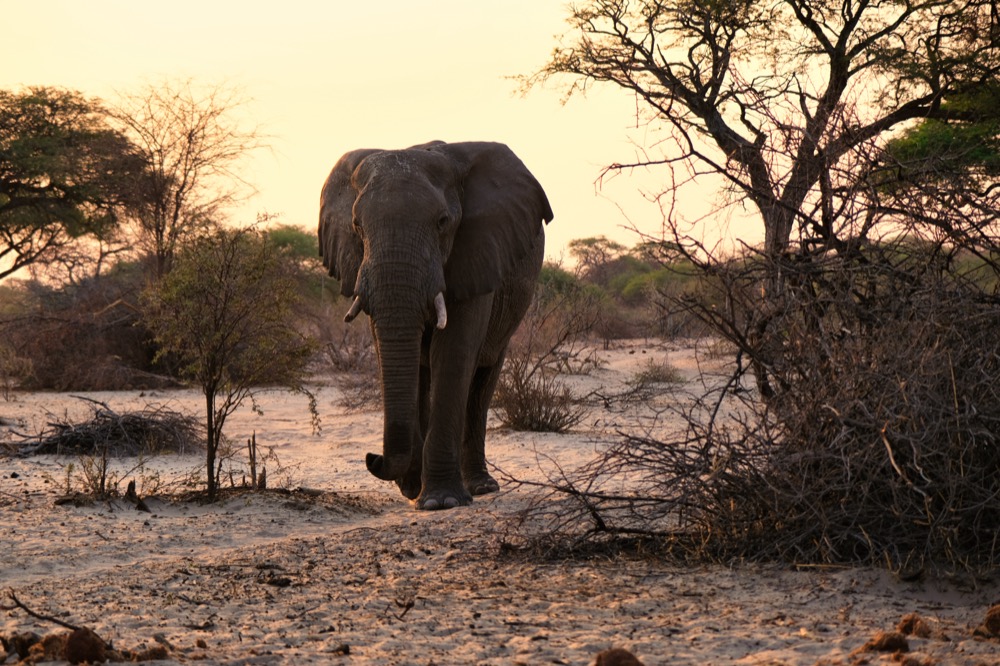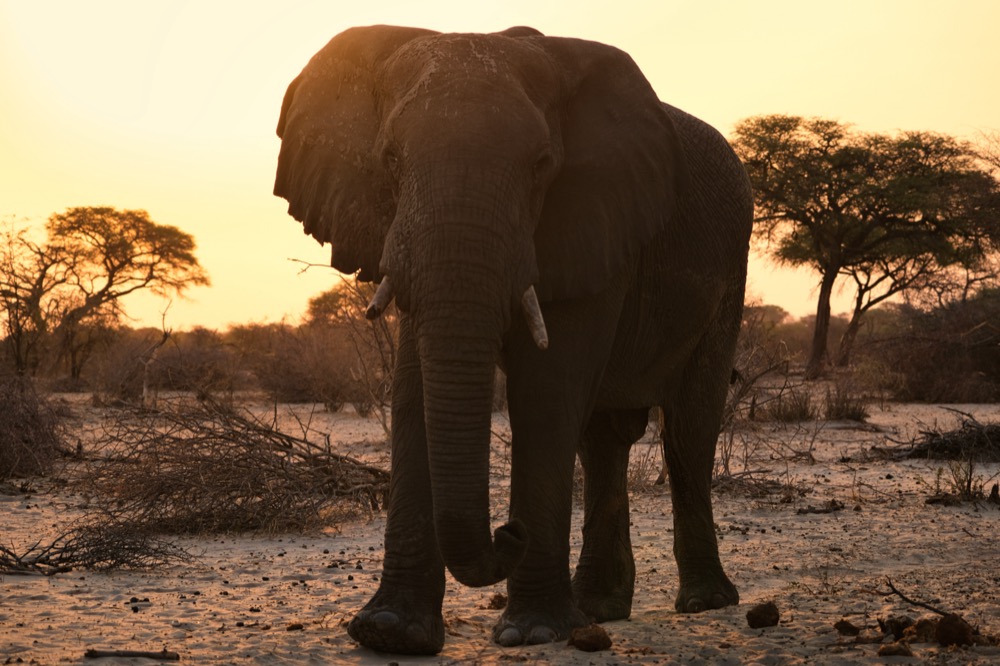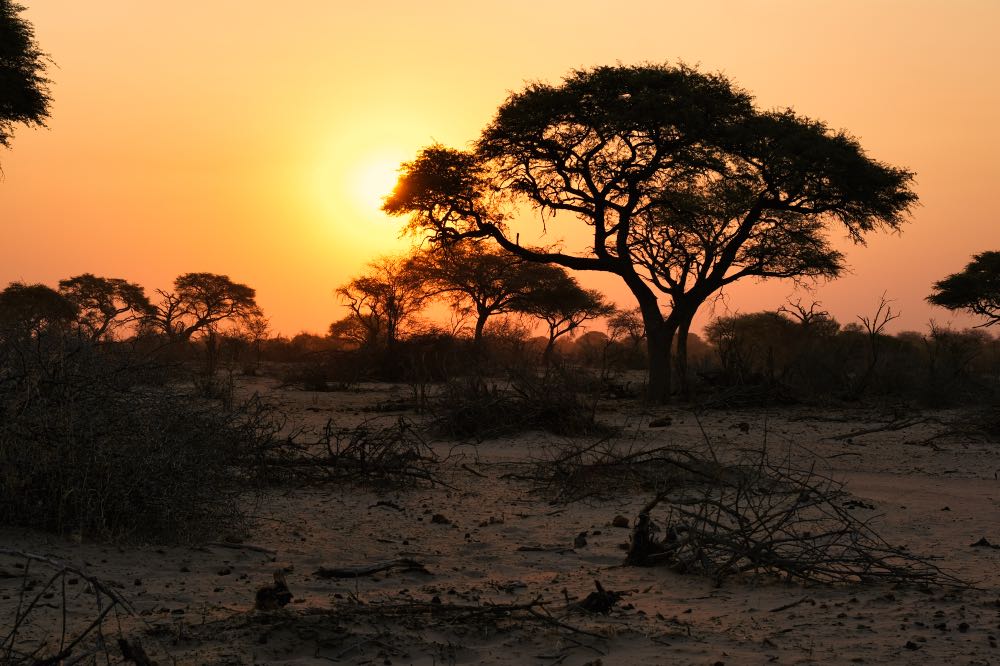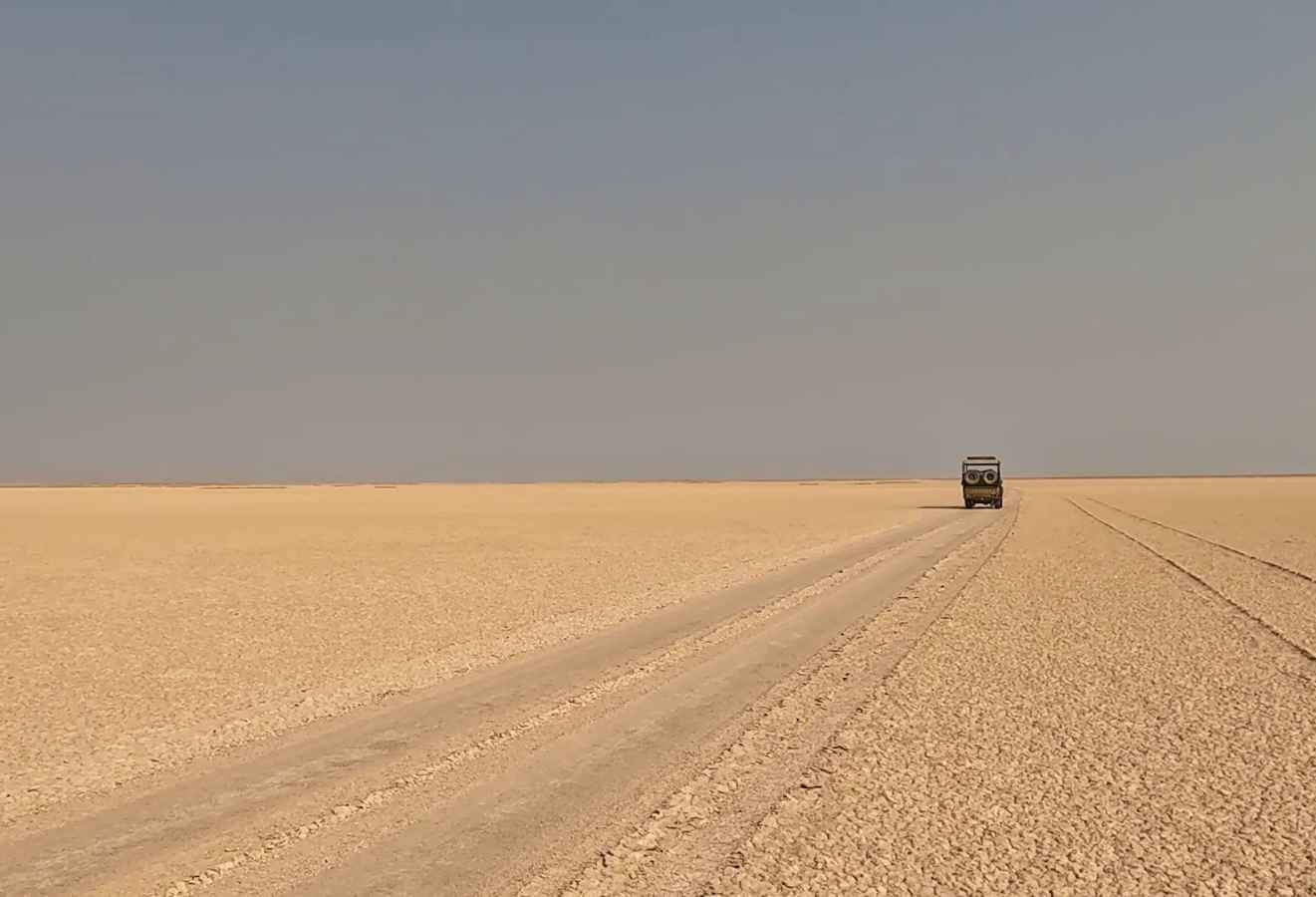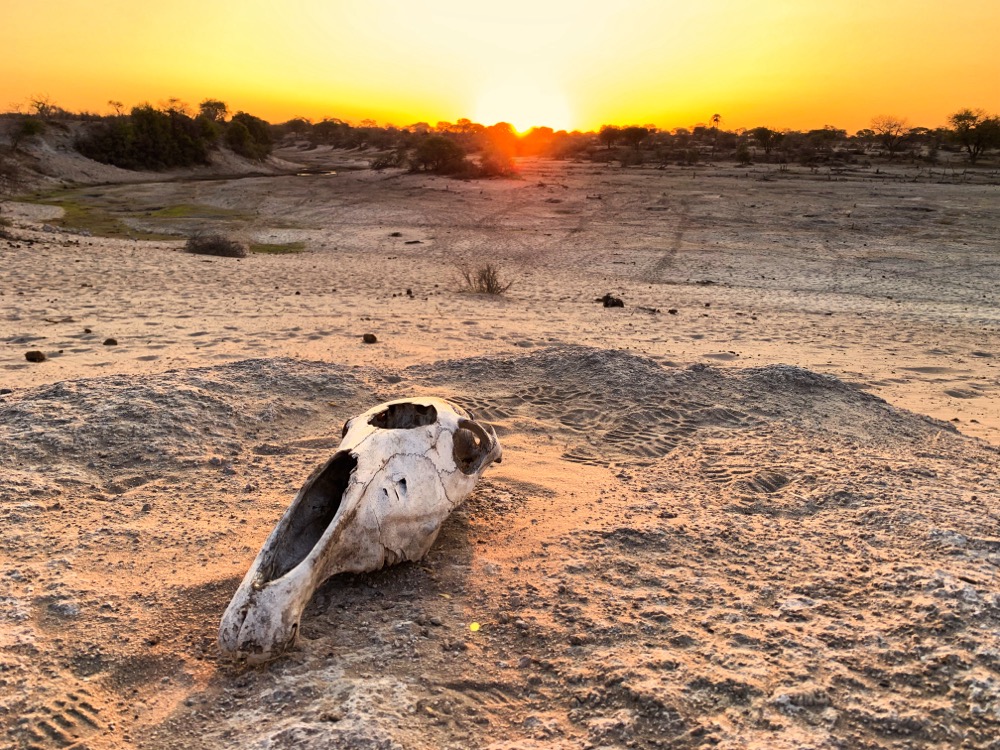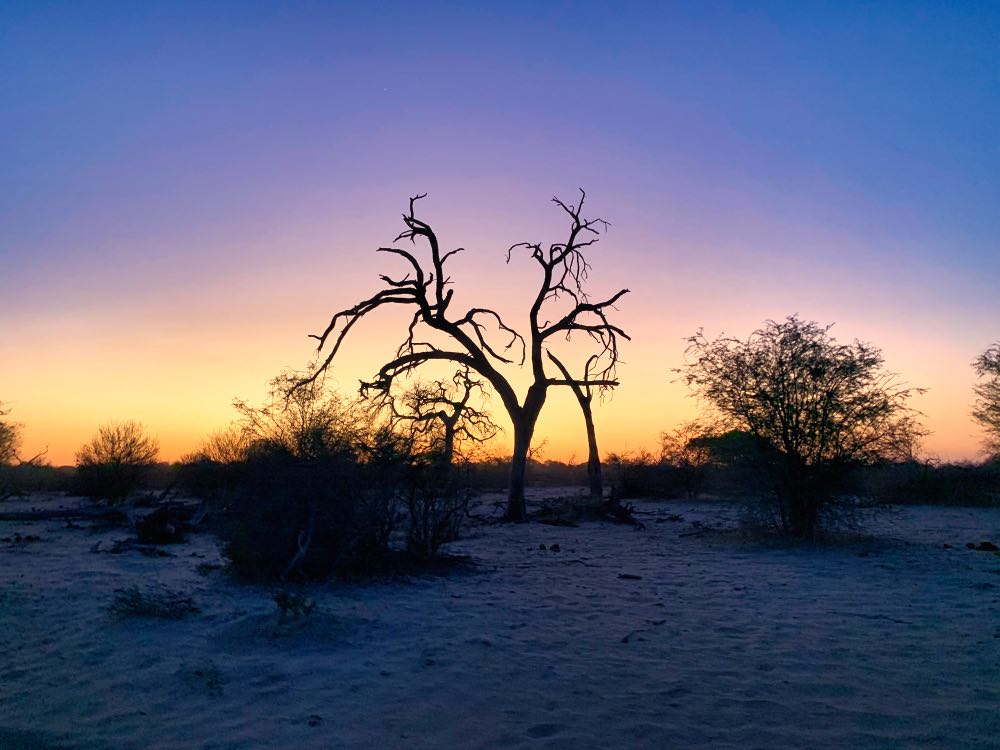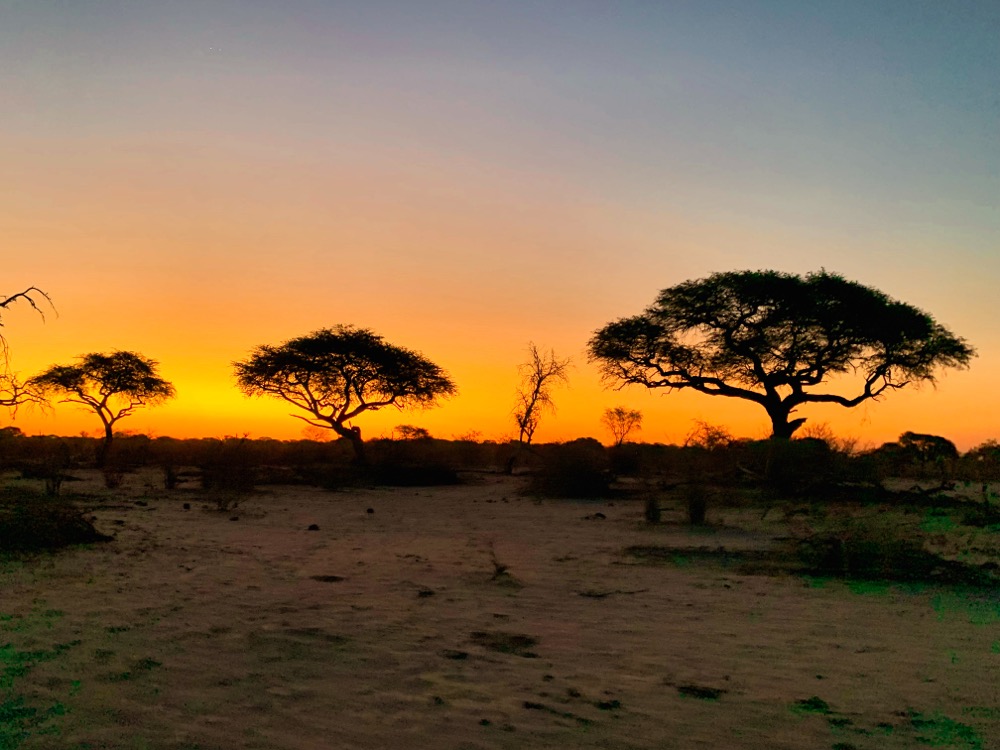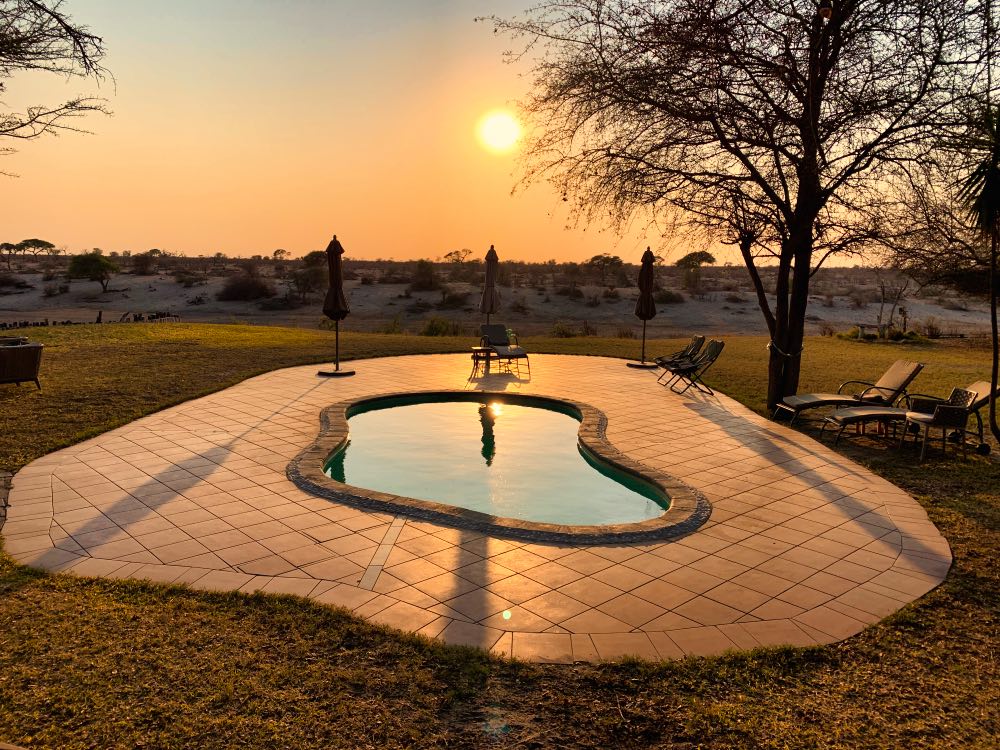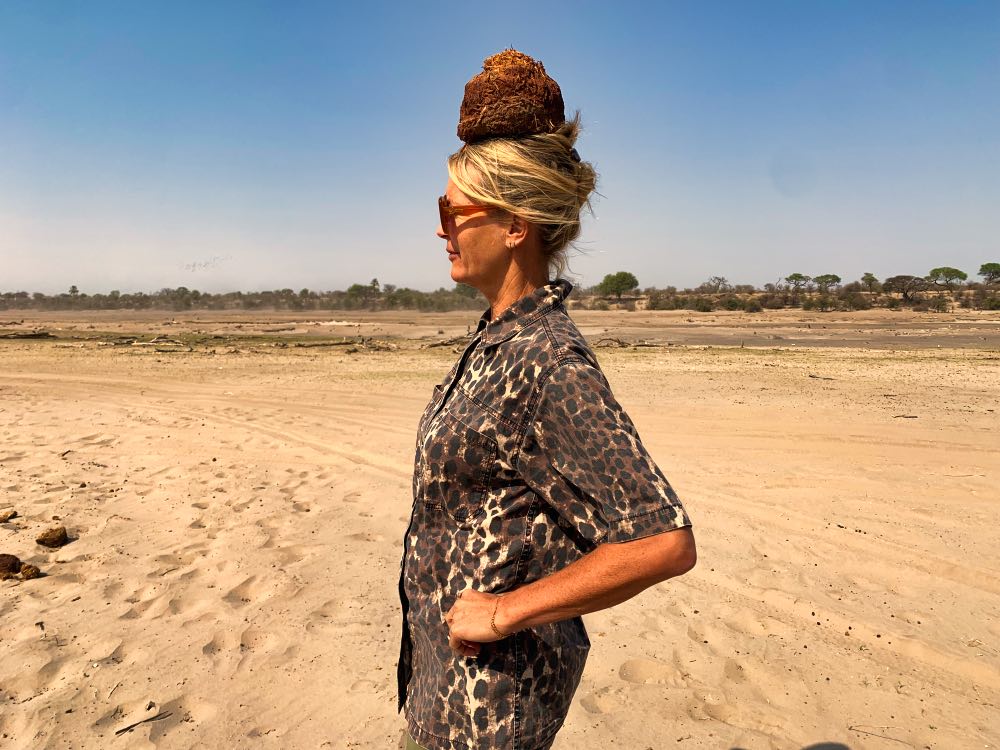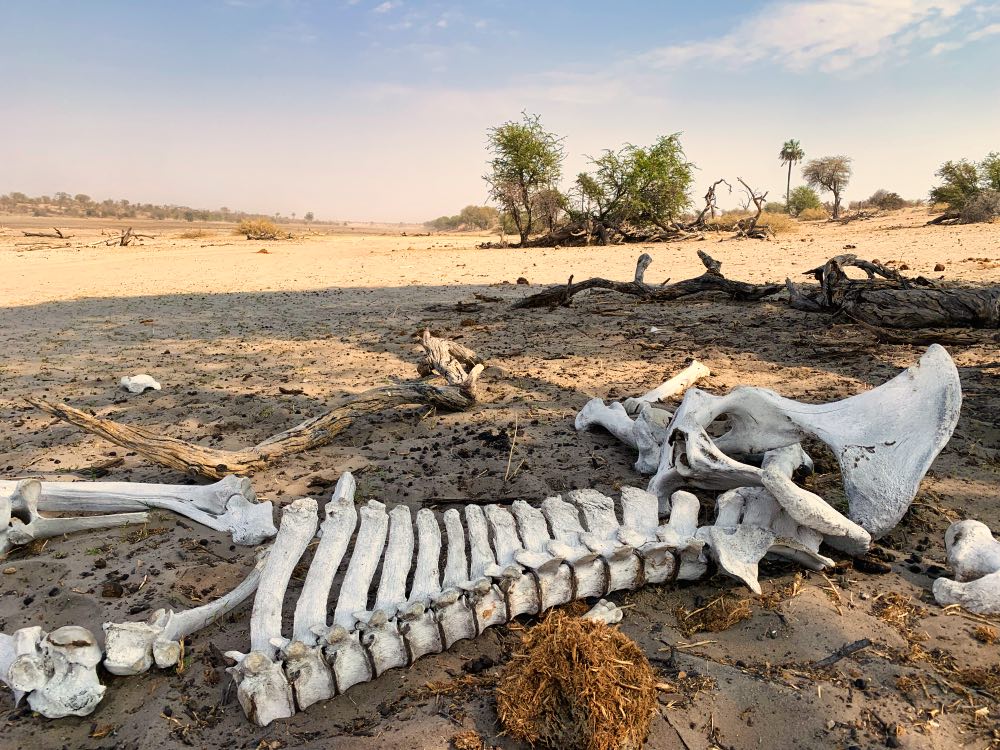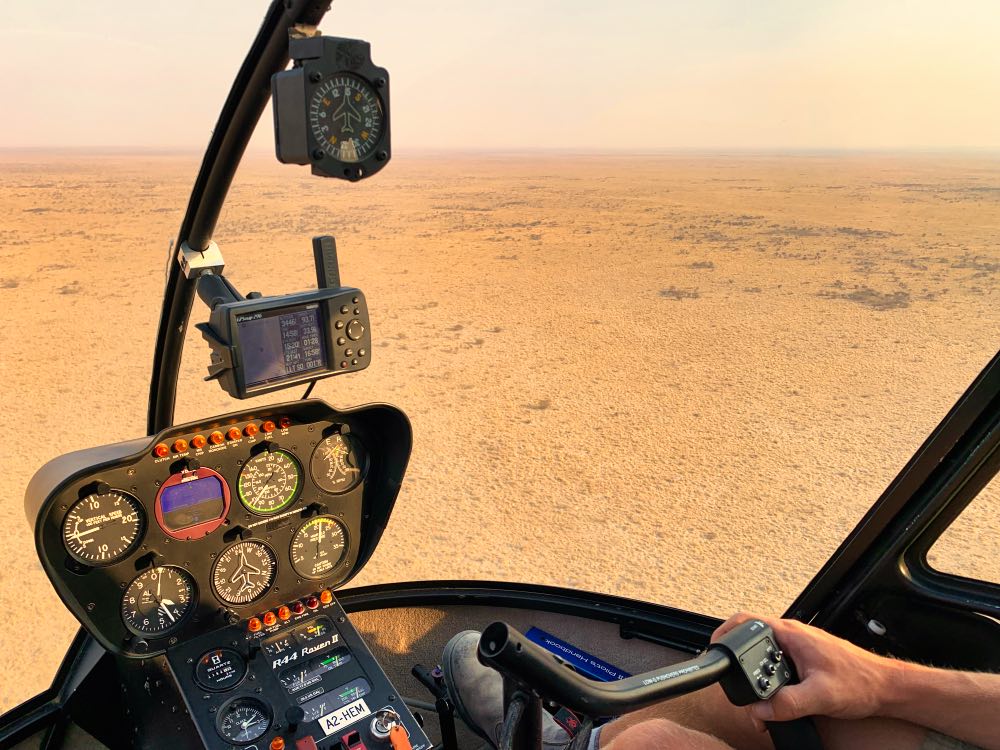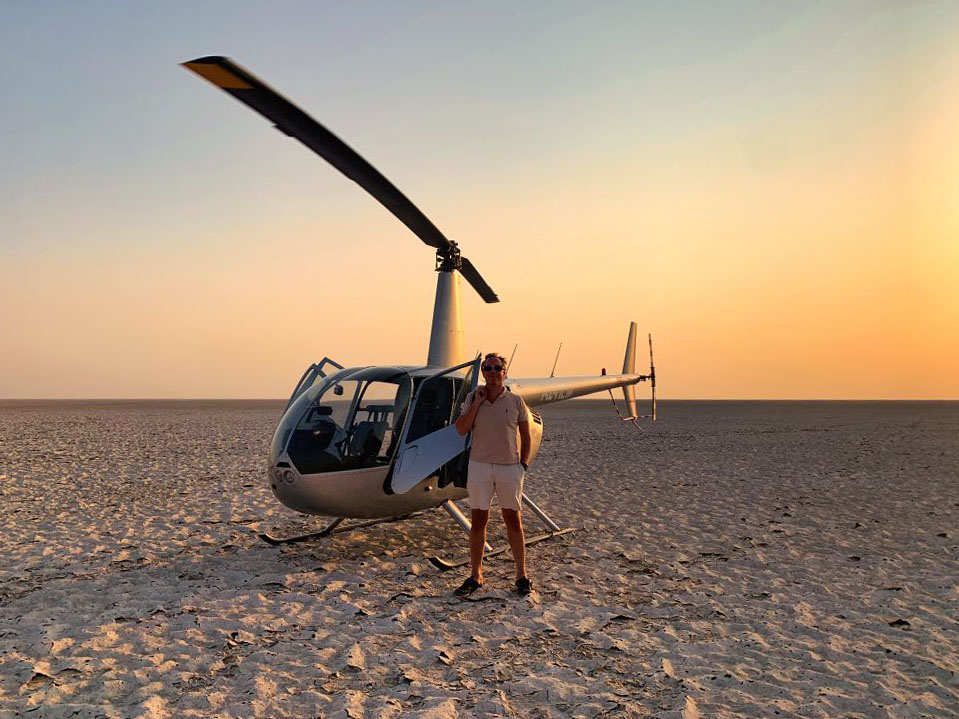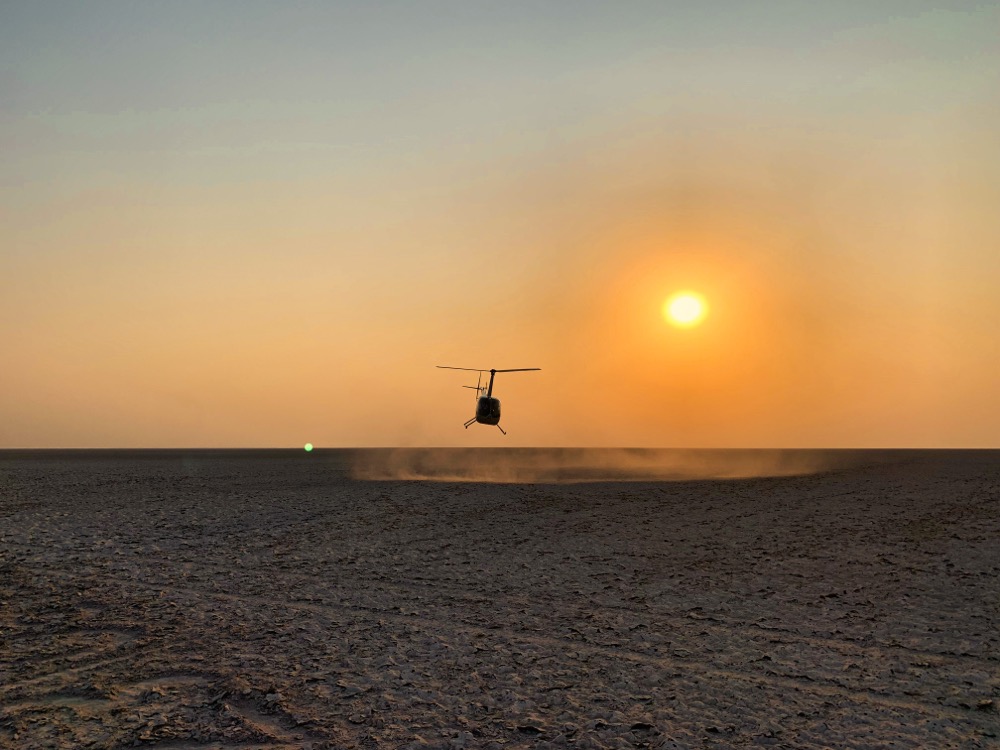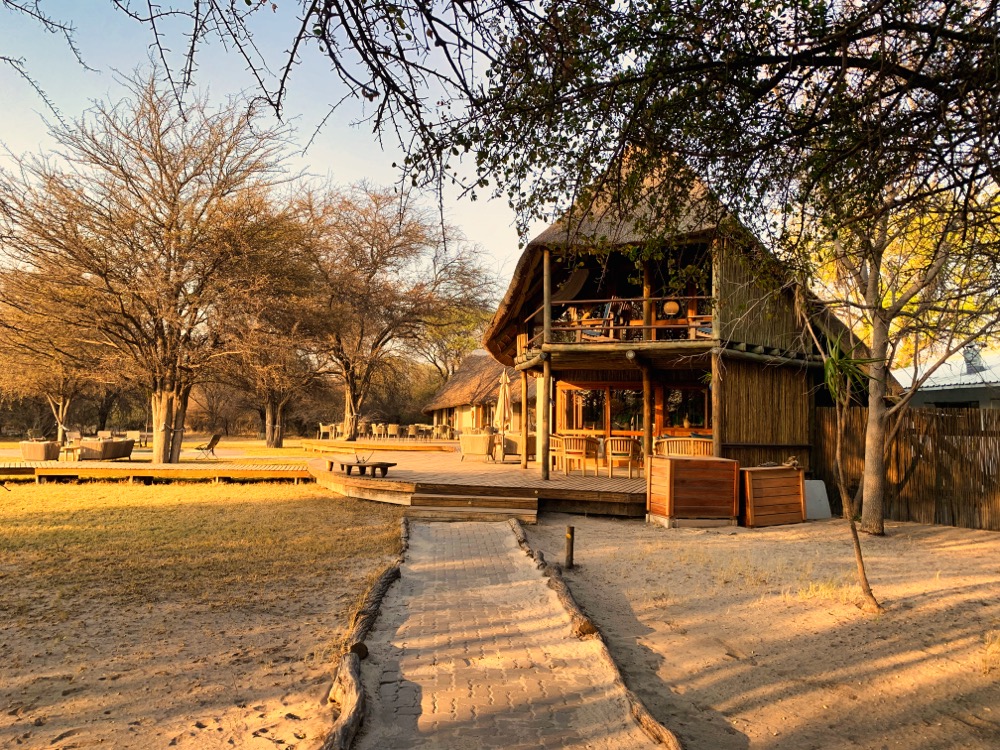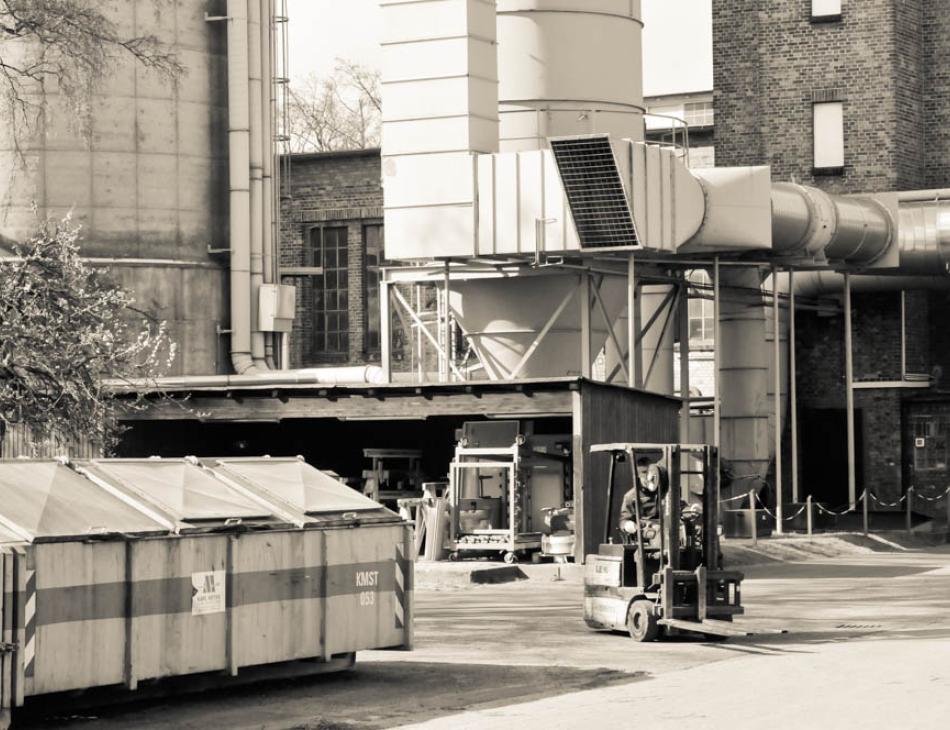Botswana Safari: Staring an Elephant In The Eyes & Driving the Makgadikgadi Salt Flats - A Luxury Safari With Desert And Delta
Leroo La Tau Lodge On The Makgadikgadi Pans National Park. Driving Across The Makgadikgadi Salt Flats - Singing ‘Ne Me Quitte Pas' On Poppadoms & Flying A Minuscule Helicopter Into The Kalahari Desert. Plus Staring An Elephant In The Eyes.
Safari Makgadikgadi Pans National Park
From Nxamaseri Island Lodge, we took a boat, a 4x4, and then a light 8-seater plane flying southeast (with me as co-pilot), before finally hopping back into a 4x4 to reach Leroo La Tau in southern Botswana. This lodge sits on the Boteti River, which forms the natural western border of the Makgadikgadi Pans National Park. To pronounce 'Makgadikgadi,' simply drop the g's (pronounced as 'maKadiKaddy'), or take tips from those guffawing old geezers on the first and last Grand Tour.
Leroo La Tau offers 12 thatched luxury lodges connected to a main lodge featuring a reading room, dining area, and a comfortable bar lounge. There's a small pool surrounded by immaculate green lawns where you can sunbathe and plan your day.
What truly sets Leroo La Tau apart is its location over the Boteti River, where hundreds of thousands of animals from the protected National Park come to drink. You have a uniquely exclusive vantage point to observe elephants, zebras, wildebeest, hippos, oryx, impalas, springbok, and birds of every size, shape, and colour as they gather for water.
Additionally, there’s a tunnel leading down to a hide—a terrace that overlooks the plain below. The animals initially appear over the far ridge of the dry riverbed before wandering right in front of you. But, you can also enjoy these spectacular views from both your lodge balcony and the lodge pool.
It almost feels like cheating—you’re perched in your luxury lodge on one side of the dry riverbed, and the animals come to you. From my balcony, I watched as a large bull elephant emerged over the ridge to join a memory of elephants already drinking from the small stream right below me, the last remaining water after a dry summer. Another male elephant quickly separated from the group and warned him off, leading to a tense standoff as they circled each other menacingly. Eventually, both charged hesitantly, butting heads and locking tusks. The lone bull soon retreated, creating distance between himself and the herd, before inching back towards the stream to drink.
On either side, thousands of zebras and hundreds of wildebeest roamed, drinking, galloping, and swirling as far as the eye could see. I half expected Sir Richard Attenborough to wander in and shout at me for blocking his cameraman’s view. It was a scene unchanged for millennia, with the trees and bush of the park receding infinitely into the distance. Nothing and no one disturbed this magical landscape.
Two sacred ibises, as tall as I am, bobbed their foot-long black beaks into the water like giant scarecrows. Above me, a giant eagle screeched as it settled in a tree, and a giraffe's head emerged over the crest of the riverbed, heading for water. The zebras whirled in formation, each one slightly behind the other, mimicking the patterns on their coats as they bowed their heads in unison to drink. It felt like being pulled into an Attenborough documentary, where you could almost reach out and touch them.
And I had only just arrived! My friends were in a similar state of disbelief, rushing around the gardens and pointing out something new every second. Once we regained our composure, we rejoined our amazing guide, Metal, and set off into the Makgadikgadi Pans National Park for a little 4x4 safari.
The park is fenced off to preserve the natural habitat of the wildlife and protect them, ensuring that no one lives in the area and that the wildlife roams free. The landscape is arid, dotted with tamboti, marula, and monkey thorn bushes at head height, alongside taller baobabs and acacias, all thriving in the desert sand. Everything is covered in thorns for survival, lending a certain beautiful starkness to the landscape.
Soon, we came across a small group of elephants walking in single file ahead of us. Metal stopped the car, and we sat in silence, watching as they crossed the path right in front of us. Our hearts skipped a beat when one of the largest bull elephants noticed us and ambled over, extending his trunk to feel the hot bonnet of the car. He sniffed, curling his trunk inquisitively as he peered at us with a thoughtful expression before slowly turning away and lumbering off. Each foot lifted gently off the ground and landed carefully, seemingly in slow motion, with the ankle bending as the flat part of the foot angled into the earth.
Metal, our guide, was brilliant, and I felt completely safe with him. He had an uncanny ability to read the elephants' feelings and reactions to our presence. He explained their behaviour to us in great detail, which helped keep us both safe and confident.
Metal's Guide to Elephant Behaviour.
Elephants exhibit four primary behavioural states, each indicating different levels of comfort and potential risk:
1 Comfort Zone
◦ Elephant shows relaxed behaviour and no signs of stress or agitation.
2 Recognition Zone
◦ Elephant acknowledges your presence but remains calm.
◦ Common signs:
▪ Head Shake: The elephant shakes its head as a way of acknowledging you without showing aggression.
◦ Tip: Remain calm, quiet, and still to avoid startling it.
3 Warning Zone
◦ The elephant begins to show signs of discomfort or agitation, issuing a warning.
◦ Warning signs include:
▪ Ears Out: A clear first warning.
▪ Head Shake: Often a second warning, showing increased agitation.
▪ Secretion from Temporal Glands: Dark patches between the ears and eyes indicate stress.
◦ Mock Charge: The elephant may charge with ears out and screaming. This is often a bluff, but it’s important to heed this behaviour.
4 Critical Zone
◦ The elephant is highly agitated and could become dangerous. Signs include:
▪ Musth (or “Must”) Condition: A state marked by very high testosterone levels, leading to aggressive and unpredictable behaviour.
▪ Signs of Musth: Head shaking, dribbling urine, and dark streaks from the temporal glands.
▪ Tip: Avoid driving or walking in the path of an elephant in musth.
Metal’s Additional Safety Tips:
• Avoid encroaching on the elephant’s space or blocking its path.
• Stay downwind if possible, as elephants can become more agitated when they pick up human scent.
• Keep calm, quiet, and still with no sudden movements or noises.
• Be aware that an elephant can easily overturn a car with its trunk if it feels threatened.
Then, with his head poking over a tree, we spotted a giraffe, followed by three others. My goodness, they are majestic! The way they amble along, moving both legs on one side simultaneously, exudes such grace and poise. They are undoubtedly my favourite of the Big Five. There’s something otherworldly about them—completely different from any other creature, so stylish and serene.
Metal is exceptionally skilled at reading tracks. He can identify exactly which animal passed by, how long ago it was, whether it’s male or female, and even if it’s young, old, or healthy. For him, it’s like reading a complete book. He explained how paw prints are classified into three categories, and once you know what to look for, it becomes surprisingly easy to interpret them. I won’t spoil his art by divulging the details here, as it's his to share. It was thrilling to hear him describe the tracks laid out in the desert sands right in front of us.
Our sundowner took place next to a large acacia tree overlooking the riverbed in the park. We munched on fruit and beef jerky while sipping wine, as a dazzle of zebras and a kaleidoscope of wildebeest spiralled about in the orange dust. It was here that my muslin headscarf, worn to protect against the dust, earned me the nickname 'Florence of Arabia,' while Metal was henceforth dubbed 'Agnes' due to his flowery headband.
On our way back to the lodge, we passed a bloat of hippos cooling themselves on a series of tiny sandbanks between shallow pools. We marvelled at the hundreds of them bathing in the mud all around us. This was perhaps the most surreal moment in a trip filled with unbelievable experiences; none of us could quite believe what we were witnessing. It seemed the mud had slowed them down, as they appeared utterly content to watch us watching them. However, we decided to move on when one larger fellow grew curious and began to cut us off from the road ahead.
Dinner in the dining hall at Leroo La Tau was excellent, prepared by local chefs using traditional recipes. It was the perfect way to end the evening—and indeed all evenings. Afterwards, we enjoyed a glass of wine by the fireplace next to the river, reliving the excitement of the day.
Perhaps our greatest adventure began the next day with a drive to the Leroo La Tau airstrip, where we were greeted by Scott, our helicopter pilot, who would fly us into the Makgadikgadi Salt Pans for our sleep-out. We climbed into the Robinson R44 four-seater, which makes a classic Mini look large. Imagine a large lightbulb where you sit squished in the glass part, and you’ll have a good idea of its size. I took the co-pilot seat again as Scott warmed up the engine, manually spinning the blades before climbing in. The flying glass bulb lifted into the air, gliding smoothly forward, accompanied by a cloud of sand dust.
As the ground fell away, we marvelled at the stunning desert landscape below. Travelling at a mere 150 metres above the ground, we could see the wildlife with incredible clarity. The Robinson R44 has only two rotor blades, so the visibility is outstanding, making this one of the most fabulous ways to view the plains of Botswana.
In just an hour, we arrived at the camp, situated smack in the middle of nowhere—the heart of the salt flats, with nothing as far as the eye could see. This is the epitome of a desert: utterly lifeless and flat, as the name suggests, with a salt mud crust that crunches like poppadoms underfoot. The camp consisted of a food truck, a dining table, and our beds, known as Kalahari bed rolls. You sleep out under the stars as if your bed had magically transported from your bedroom to the middle of the Kalahari Desert. No tent, no lodge, no walls—just you in a bed in the desert. It’s completely surreal.
To be fair, it was still incredibly luxurious. Our dining table was laden with snacks even before the gorgeous dinner was served. The bar was well-stocked, and the fire kept us warm as the winds picked up, bombarding us with blistering sand at 40 mph. Did this sandstorm dampen the flames of the fire or our spirits? Quite the contrary! The fire blazed and roared while we danced around it, singing a variety of songs, including a resounding rendition of ‘Ne Me Quitte Pas’ by those fortunate enough to know the words to Jacques Brel's masterpiece.
Eventually, we staggered off, blinking against the wind and stumbling around blindly until we managed to find our bedrolls—more by luck than skill, as we could barely see more than a few feet in front of our faces. Curses flew freely in the wind as we struggled to clamber into our snug bedrolls, battered by the sand. Finally, with our little heads poking out like turtles, we admired the night sky and listened to the desert winds whispering across the plain. The entire day had been an epic adventure, one we would never forget—dancing in the desert, once again surrounded by friends.
As the sun rose, Metal and I watched everyone helicopter out while we prepared the Toyota 4X4 for our journey ahead. Yes, Florence and Agnes were crossing the Makgadikgadi together for one last great adventure in Botswana. Driving across the salt flats, made famous in the first and last Grand Tour, is absolutely legendary. There is no road—just the endless desert stretching out in front of you. Driving across a desert is always special, but the Makgadikgadi is exceptional for its beauty; crunching over the infinite poppadoms at speed feels truly unique.
Metal and I chatted in-depth, as one always does on tour; it’s the best way to truly get to know someone. After many hours of blissful driving, the scenery began to shift. The cracked desert floor gradually transformed into soft sand, dotted with occasional shrubs and trees. There was a sharp line marking the transition to the bush as if cut by a giant sword—the dunes suddenly sprouted trees and shrubs, defining the edge of the Makgadikgadi.
Before long, we were careening along, grinning from ear to ear as the back of the 4X4 slid back and forth through the deep, yielding sand. As a final gift from Botswana, we spotted Metal’s favourite bird: the magnificent secretary bird. Its elegant stature and striking appearance are matched only by its unique hunting style; when it attacks a snake, its claws tap up and down as if typing, giving it its distinctive name.
As our adventure drew to a close, Metal had one last surprise in store for us. He took us to meet the chief of a nearby village, and it was such a privilege to chat with him. Chief Ngande of Khumaga Village is the third chief in his family line, proudly following in the footsteps of his grandfather, the very first chief. He shared with us a bit of his story—how he lost his father when he was just 15, a poignant reminder of the responsibilities he carries.
Ngande has an older brother, and while the oldest son traditionally has the right to become chief, the process is not as straightforward as it might seem. There’s a thoughtful consultation process in place, where the community comes together to discuss who should lead. Factors like education and wisdom are taken into account, making it a deeply considered decision. What I found particularly inspiring is that the views of all community members—both men and women—are included in this process, and women can also be chiefs if chosen.
As chief, Ngande has judicial responsibilities, presiding over cases like a court of law and overseeing the assignment of community services. The village has a population of 1,016 people.
Finally, we returned to the lodge just in time for lunch and a refreshing swim in the pool—a much-needed step to get the sand out of my hair.
Our return flight in the tiniest Cessna I had ever seen was nothing short of epic! I had the privilege of flying as co-pilot with Wesley, who navigated expertly through some rather turbulent winds. The landscapes of Botswana unfolded beneath us, just as breathtaking on that final day as they had been on the first.
Botswana is a wonder beyond words; you truly have to experience it for yourself. So many memories flood my mind, but one stands out. As we drove from the Makgadikgadi salt flats into the bush, the landscape transformed dramatically—a sharply delineated shift from one flat expanse to another that seemed to stretch into infinity. At that moment, I realised there was no more mesmerising place anywhere in the world. I wanted that moment to last forever, and it has—seared into my memory. Botswana is stunning, as are its people. Our guide, Metal, was extraordinary—an individual who seamlessly embodied the roles of scientist, guide, and friend.
All the people we met with Desert and Delta were incredible, and this is what made our Botswana safari truly special. A heartfelt 'Pula' (thanks in Setswana) to Ra, Tiny Bubbles, Queen, Paul, Mr B, Nine, Action, Metal, Rose, Loveness, Scott, and indeed, all of you!
https://desertdelta.com
https://desertdelta.com/camps/nxamaseri-island-lo…
https://desertdelta.com/camps/leroo-la-tau/
African Pride offers three nights at Desert & Delta Safari’s Nxamaseri Island Lodge with one of the nights being at Tsodilo Hills sleep-out camp and three nights Leroo La Tau – with one of the nights being the Makgadikgadi Pans sleepout and return helicopter transfers to and from the Salt Pans. Includes all meals, local drinks, laundry, safari activities, internal flights and return economy flights via Johannesburg with British Airways and Airlink to Maun from £9,943 per person, based on two people sharing.
Price based on departing 16 June 25 or 02 Sept 25 Makgadikgadi Pans sleepout experience only available 15 June – 31 October 2025.
Contact www.african-pride.co.uk or telephone 01904 619428.

